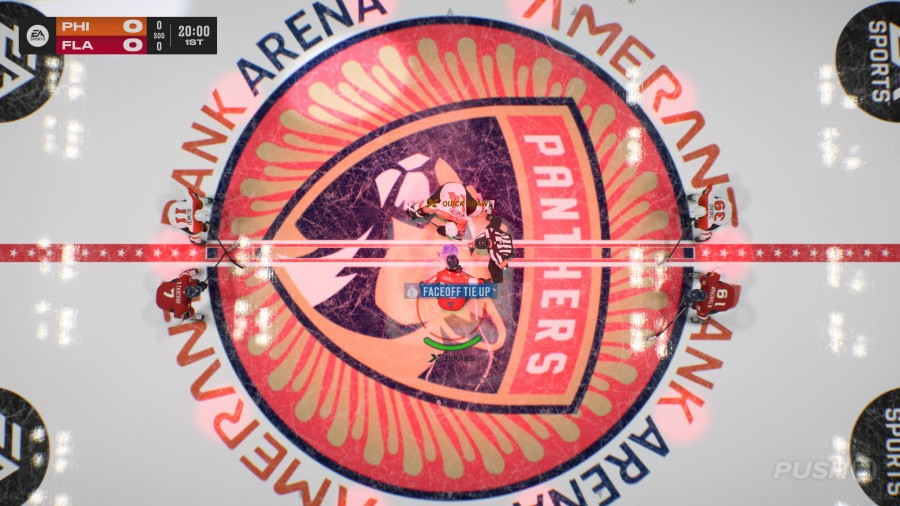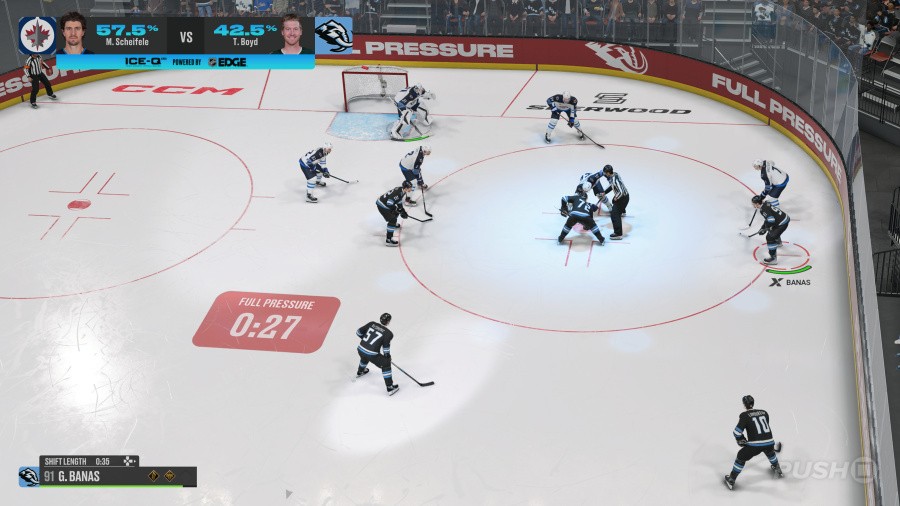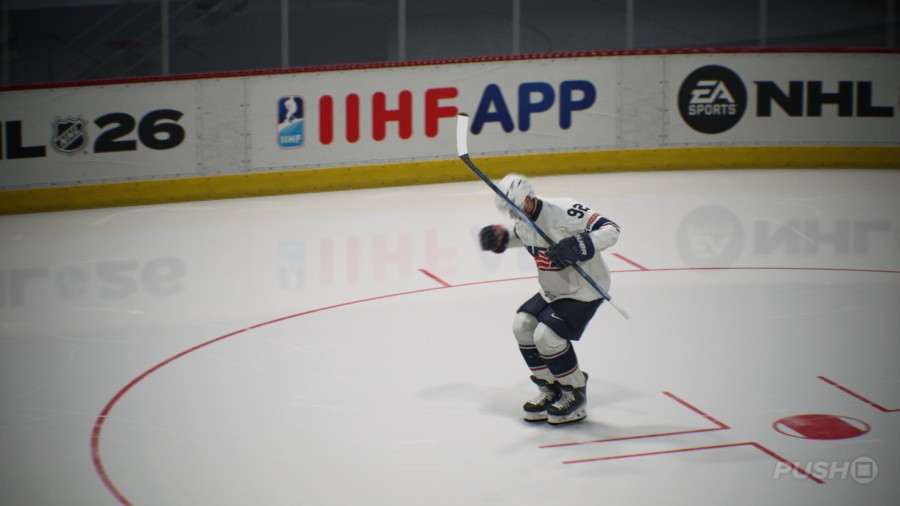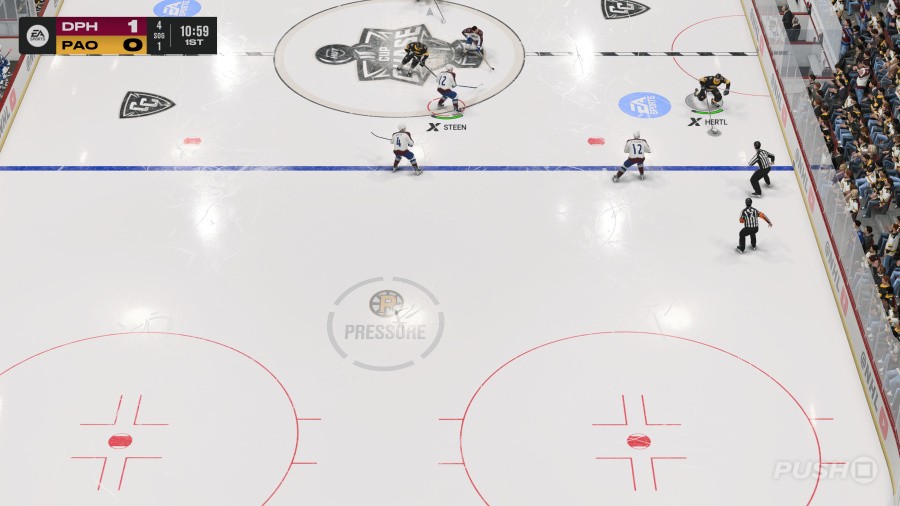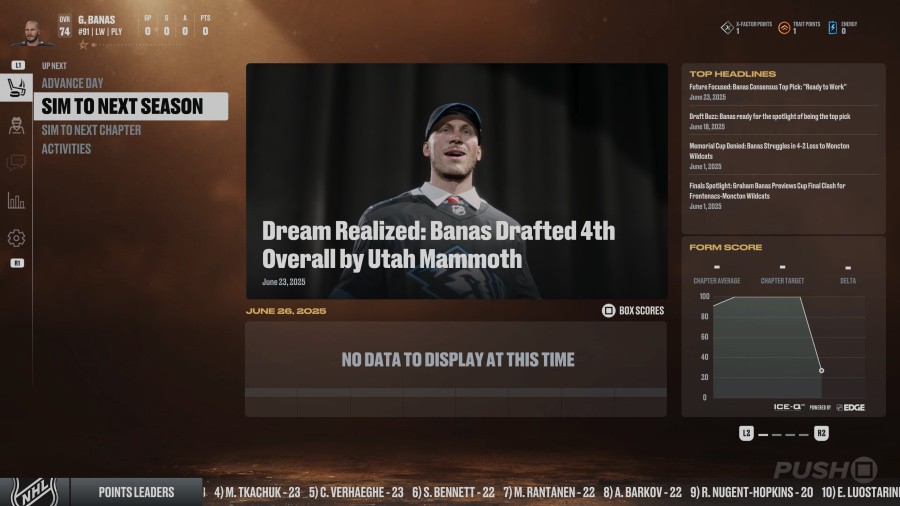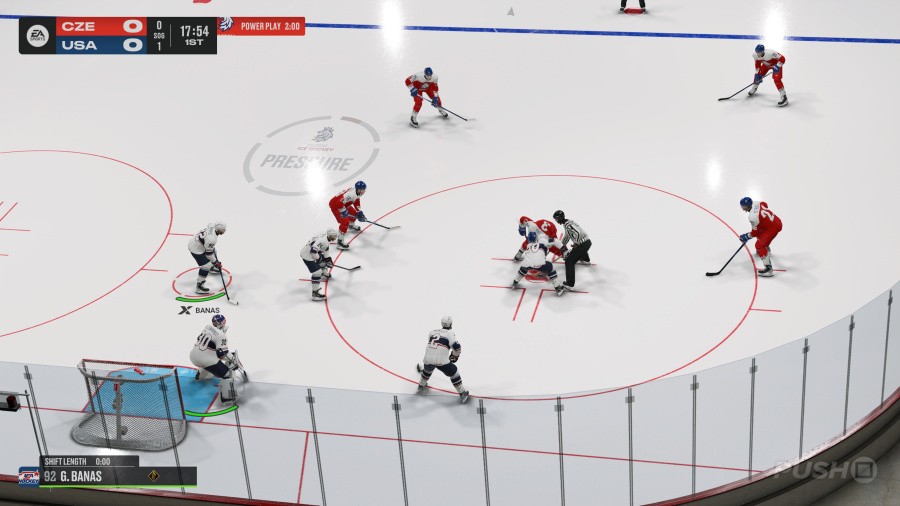Annual sports titles are generally fixated on iteration. Adhering to an annual release schedule for titles with massive scope and a general high bar for visual presentation is difficult, so the titles have to cherry-pick a few things to change for a given year and hope things improve.
This approach did not end well with last year’s hockey title; NHL 25 did almost nothing to improve upon the groundwork that NHL 24 had set up, which introduced an all-new control scheme.
Mercifully, NHL 26 has learned its lesson, offering up a couple of significant changes, as well as some gameplay tweaks that improve the experience.
The biggest changes by far are the alterations to the Be A Pro mode, the game’s equivalent of a campaign. Having gone untouched for a number of years, the mode was growing stale and painfully predictable. A whole host of presentation changes have been implemented, including new cutscenes — gone is the horrendous pond hockey sequence — new conversations, and perhaps most surprisingly, voice work.
The cutscenes were wholly text-based in years past, so the inclusion of voice acting certainly helps sell the experience. Even more so when you hear actual players, like phenom Macklin Celebrini, calling you up to congratulate you on getting drafted.
While Celebrini’s voice work isn’t stellar, it’s still a level of care and attention the mode hasn’t received in a long time.
The inclusion of the World Juniors tournament as your entry point into your career is also welcome, providing the chance to play in one of the most exciting prospect events the sport has to offer.
Another welcome inclusion surprisingly comes in the Ultimate Team mode. While the mode remains playable without pumping money into it, the new Cup Chase mode adds a more interesting structure to the offline aspects.
You compete in a mini-season in hopes of qualifying for a playoff series, with bigger rewards offered the further you progress. While it doesn’t change the minute-to-minute gameplay of Ultimate Team, the more rigid structure makes the mode more fun to engage with.
This is good because the mode seems to withhold rewards to a greater degree than in years past. You seem to get far less in the way of meaningful upgrades without spending money on the bigger budget packs.
The remainder of the modes are pretty much what you’ve seen in previous entries — online versus, World of CHEL, Franchise, all the PWHL modes — but a couple of meaningful gameplay changes do help to heighten the experience.
First and foremost, after a couple of years of having major gripes with the new checking system, we finally feel that hitting is in a good place. Lining up players and following through with major hits is more fluid than before.
It’s still challenging enough that it doesn’t happen too often, but at least it finally feels good. Plus, major hits aren’t the most common thing in real hockey, anyway.
The other major gameplay area that sees some changes lies with goaltending.
On the negative side, goalies seem to have major issues handling slapshots this year. The number of times we saw a goalie beaten by a slapper from the point with no hint of a screen was far too high. Especially in a modern NHL setting, where goalies have incredible positioning and reflexes.
But this is a price worth paying for the addition of the new approach to desperation saves. Goalies will still occasionally react inappropriately, but they make better use of a whole host of new moves for scrambles at the front of the net, and they work brilliantly.
Now, if a fluky shot flutters over the shoulder of the goalie, you don’t have to resign yourself to the fate of giving up a goal. The netminder will try and shrug the puck away, flailing as desperately and as successfully as the best in the world are capable of.
These changes are most welcome, but is anyone still around to see them? Whether it’s from fatigue with the state of the franchise or just dwindling interest, finding online matches proved more difficult than it has in a long time.
Several of the modes were almost impossible to find matches in, and regular modes like online versus even proved difficult at times, with just a couple of hundred active users at a time.
Part of the issue could be that the performance of the online component seems to have taken a step back, though. Most of the matches we played had frame drops and discernible lag that made it difficult to play the game at times.
And this on top of the usual slew of bugs that have been present in the game for a long time; the “syncing” that locks you in a menu while the game plays underneath the graphic is somehow still there, in addition to some new woes.
While its impact on the game could be worse, the title has a bizarrely high frequency of ringing pucks off the post. As a Colorado Avalanche fan, this writer’s used to watching Cale Makar ring some iron, but even then, this game does it a lot. You’ll get 3 or 4 shots consecutively sometimes, and the issue is exacerbated when you try and place your shots. It’s bizarre.
And we’d be remiss if we didn’t mention that the menus and navigation seem slower again. Somehow this keeps happening, but it’s especially noticeable on some of the post-game screens, where rather than simply feeling sluggish, it feels jittery and broken.
Conclusion
NHL 26 isn’t a massive overhaul by any means. The title fixates on a couple of key areas to improve upon, and unlike some previous entries, it succeeds. The new updates to Be A Pro, chiefly the World Juniors and voice acting, are incredibly welcome. Even more so, the tweaks to the hitting engine and especially goaltending are phenomenal. But that’s a rather slight list of changes for a full-scale annual release. Pair that with poor online performance and difficulty of finding matches, and you have to ask yourself if the updates are worth it. Is this a better title than NHL 25? Absolutely. But are those changes enough to make this a good game? Well, that’s a more complicated question.


